Pruning a fiddle leaf fig: quick tips for these houseplants
The experts reveal everything there is to know about pruning a fiddle leaf fig, so you can keep these indoor plants thriving
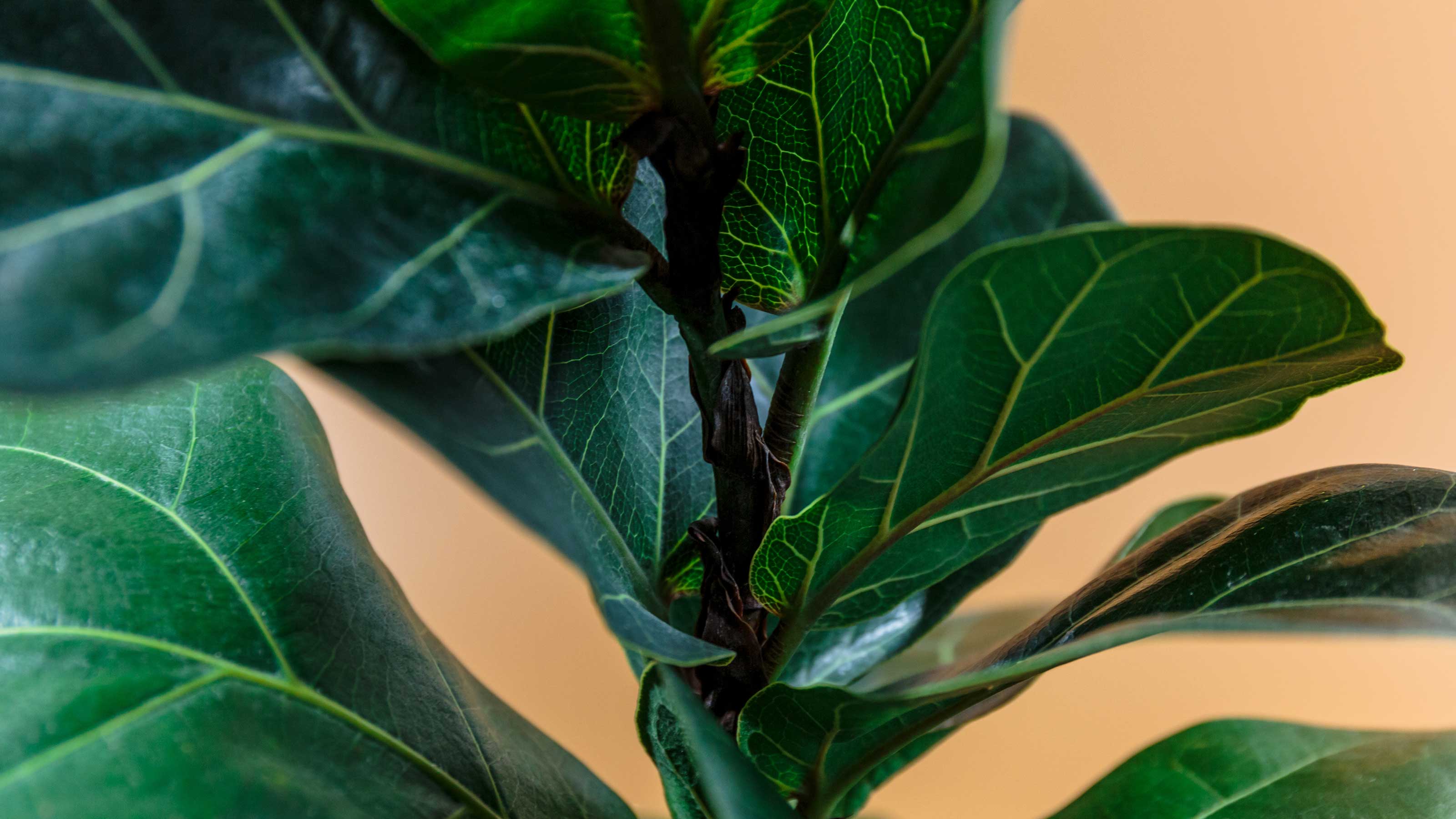


If you need some tips on pruning a fiddle leaf fig, we're here to help. These tropical plants, with their large, glossy leaves, are a popular choice for brightening interior schemes. And if you have one in your home, giving it a trim from time to time is a great way to keep it in shape.
Pruning isn't strictly an essential part of fiddle leaf fig care. But, as they often grow several inches a year, it can be a useful way to ensure they don't outgrow their allotted space. Pruning also allows for any dead or damaged leaves to be removed, and can help improve airflow around the plant – which can reduce the chances of diseases.
What tools should you use for pruning a fiddle leaf fig?
Kali Hamerton-Stove is a Co-founder and houseplant expert of The Glasshouse, a social enterprise based in the glasshouses of UK prisons. In terms of which tools to use when pruning a fiddle leaf fig, she recommends a sharp pair of secateurs for cutting branches.
'To trim or remove damaged leaves, we use pruning scissors,' she continues. 'Ensure your hands and tools are clean to avoid contamination from other plants, and use gloves to avoid the sap if you have a latex allergy.'
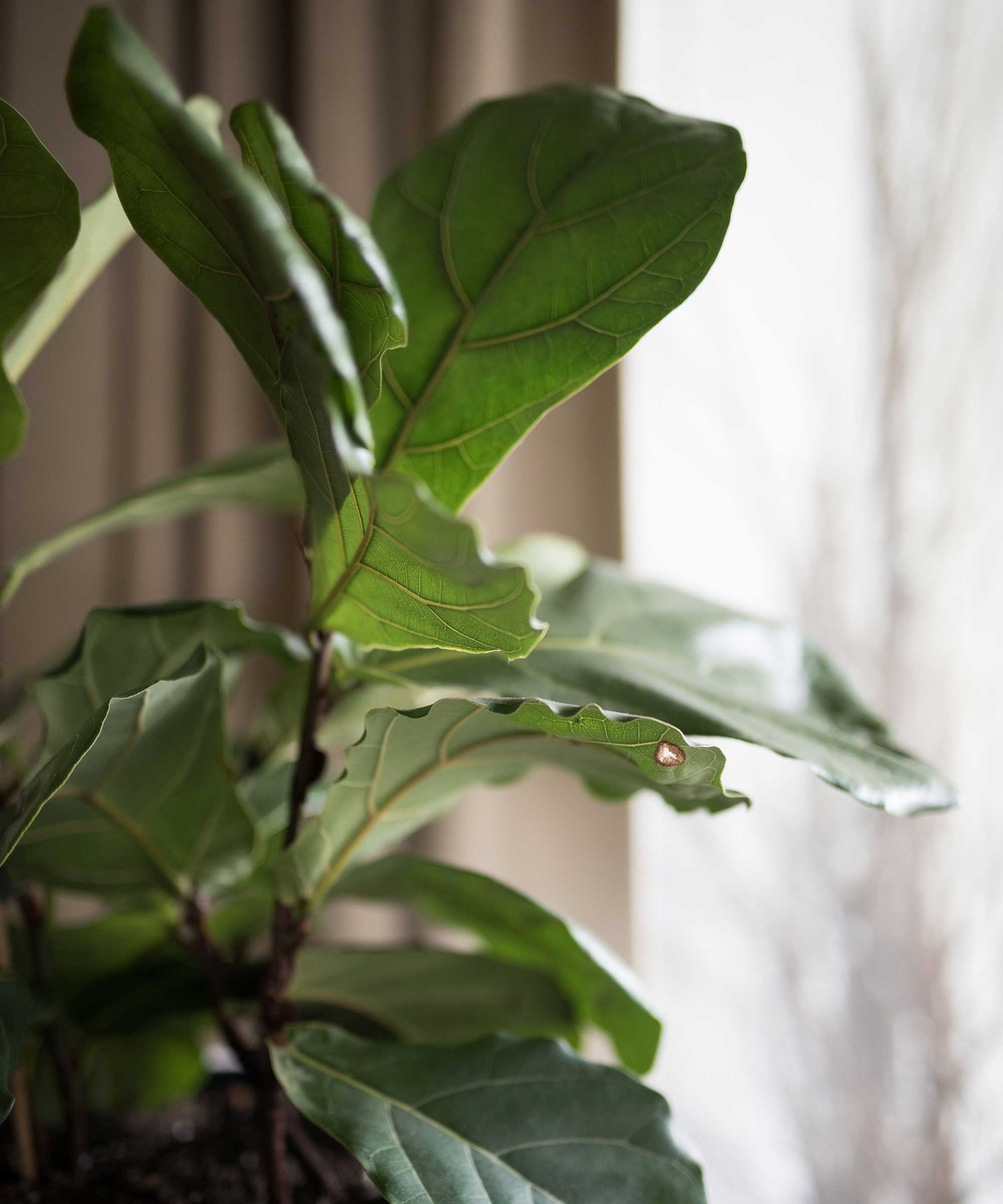
Pruning fiddle leaf figs will keep them in shape
Expert advice on pruning fiddle leaf figs
'If leaves or branches are growing tightly together, it’s a good idea to trim the leaves to reduce crowding,' Kali says. This allows for free growth and enables airflow between the leaves.
'Damaged leaves with brown spots can be removed,' she adds.
For particularly tall fiddle leaf fig plants, check that the leaves aren't touching the ceilings or walls, as this can damage them. If so, trim them so that they're around 6in (15cm) away, Kali says. Pruning is also a good chance to shape your tree to how you'd like it to look in your indoor garden. Jo Lambell, Founder of Beards & Daisies, says, 'If you feel your fiddle leaf is beginning to look a little lopsided, then trim strategically to encourage growth in the desired direction. It’s all a balancing act!'
Ensure your pruning shears are sharp, so the cuts can be made without crushing branches or stems, Kali says. Each cut should be made a couple of inches or so away from the trunk, to ensure it is not damaged and the plant is able to heal. 'If they're healthy and exposed to proper light, you can expect branches to split where pruned and sprout new leaves within the year.'
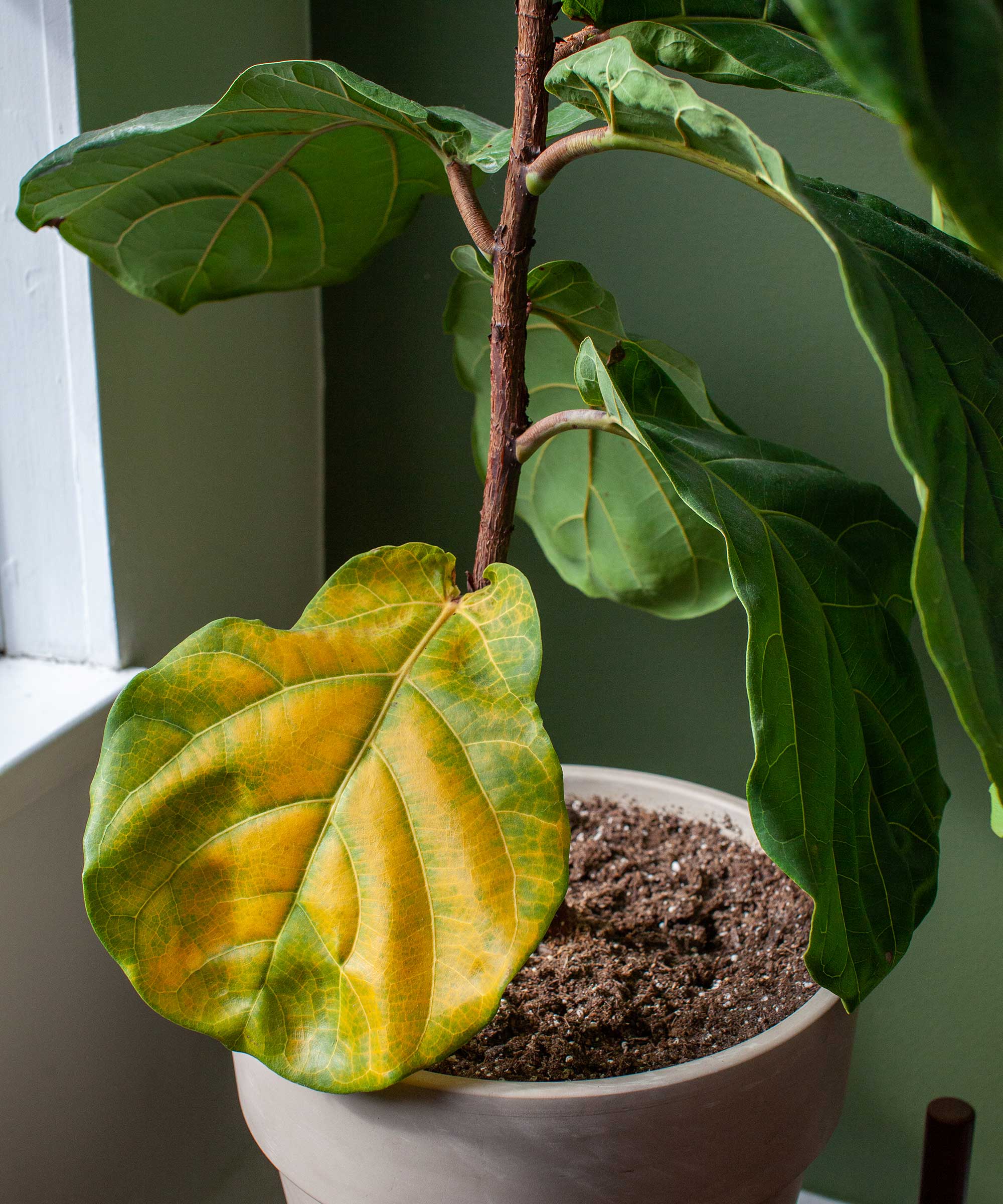
Old brown or yellowing leaves can be removed
Often when pruning shrubs or trees, it's advised not to take away too much at a time, and fiddle leaf figs are no exception. Kali says that at The Glasshouse, they wouldn’t cut off more than 15% of a plant at any one time. Jo similarly advises to 'go slowly on your pruning mission.
'It’s advisable to never remove more than 10 leaves from your plant at a time, or you may risk it going into a state of shock,' Jo continues. 'If you feel you do need to remove more than 10 leaves, then we’d recommend waiting until your plant starts sprouting new leaves on top before removing more.
'Once you’ve finished pruning, treat your plant to plenty of indirect sunlight and of course, a drink – it may be feeling a little thirsty after its trim,' adds Jo. Fertilizing the plants will also help spur on new growth. Kali suggests a monthly feed from mid-spring to fall with a seaweed-based houseplant food, or one specifically designed for ficus plants.
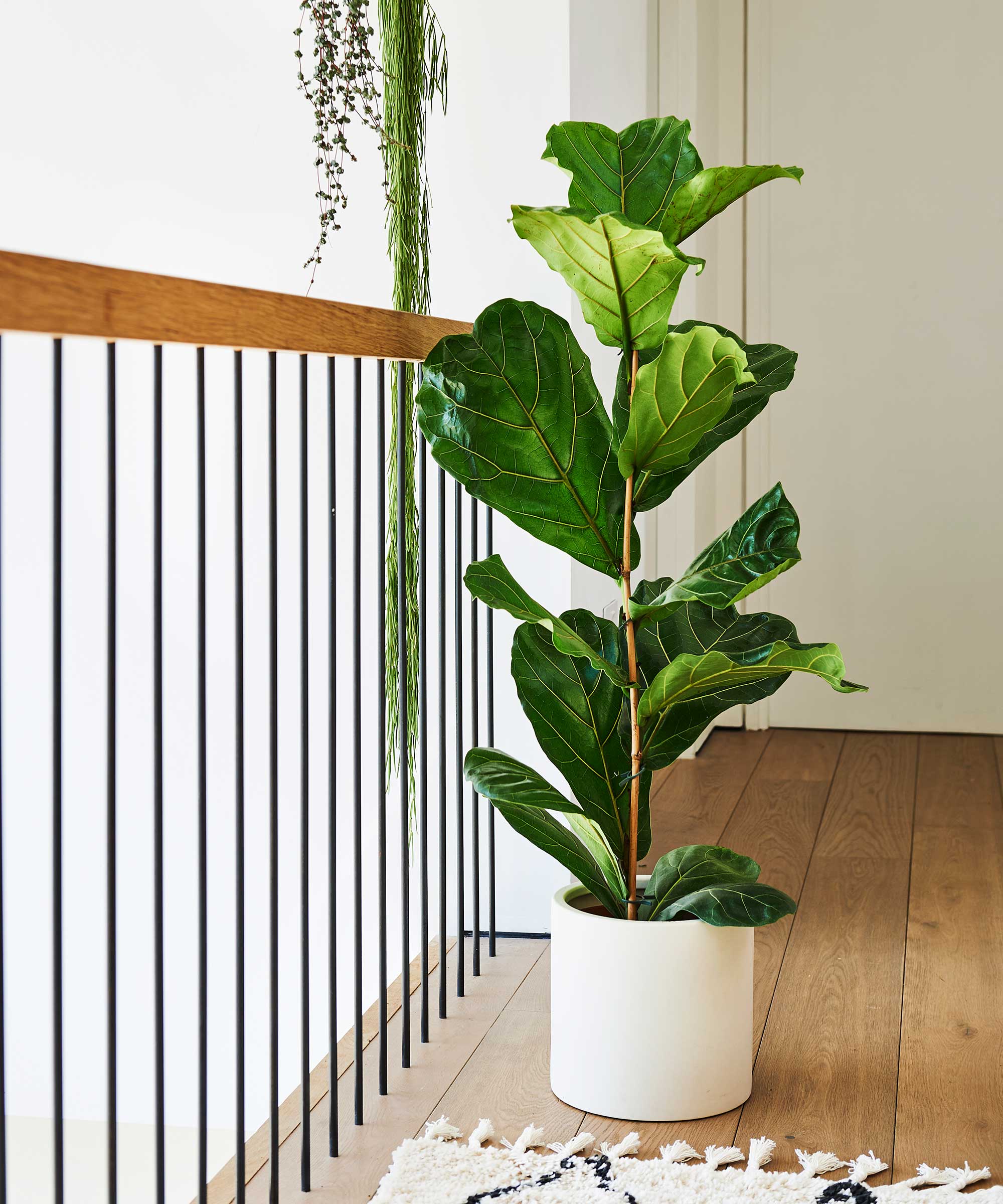
The fiddle leaf fig, available at Beards & Daisies, is a popular houseplant
When is the best time for pruning a fiddle leaf fig?
'The best time to prune your fiddle leaf fig is in either spring or summertime when your plant has access to plenty of light to recover,' says Jo. 'This is when your plant is in its growth phase rather than the dormant state you’ll find it in during the winter months.
'Treat your plant to a yearly prune to keep it growing and glowing,' she adds.
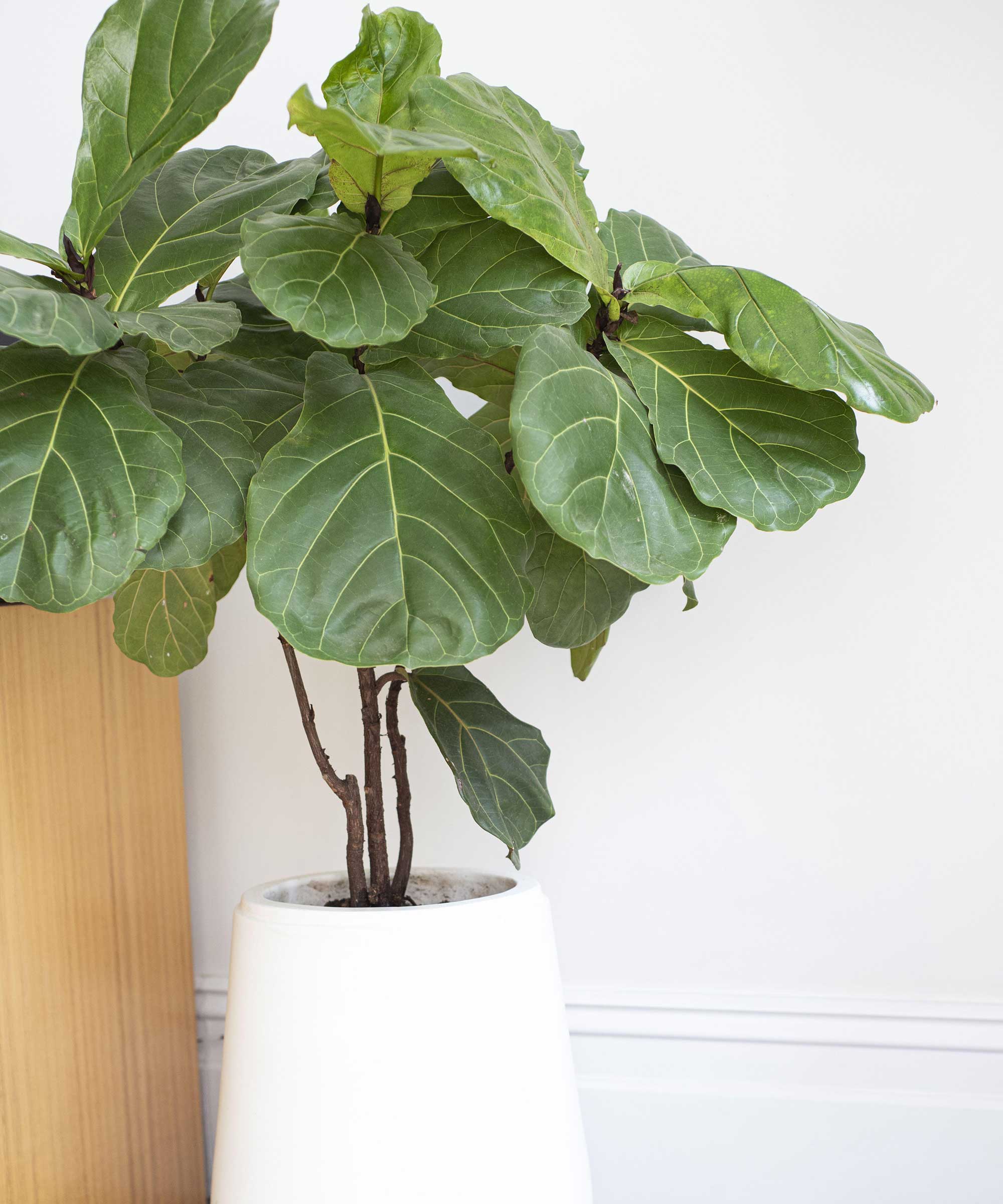
Removing some of the leaves can encourage airflow and healthier plants as a result
What can you do with the leaf trimmings after pruning a fiddle leaf fig?
'Why not use any cuttings you’ve made to propagate and grow yourself some new plant babies?' suggests Jo. This method of fiddle leaf fig propagation is easy, and a great way to get new plants for free, either for your own collection or as gifts to friends and family.

The garden was always a big part of Holly's life growing up, as was the surrounding New Forest where she lived. Her appreciation for the great outdoors has only grown since then. She's been an allotment keeper, a professional gardener, and a botanical illustrator – plants are her passion.
